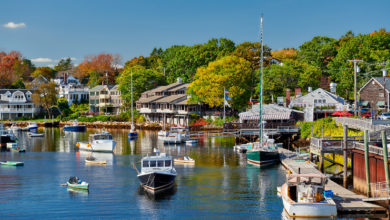Charming Churches in the Pine Tree State
Tour these historic churches on your next visit to Maine
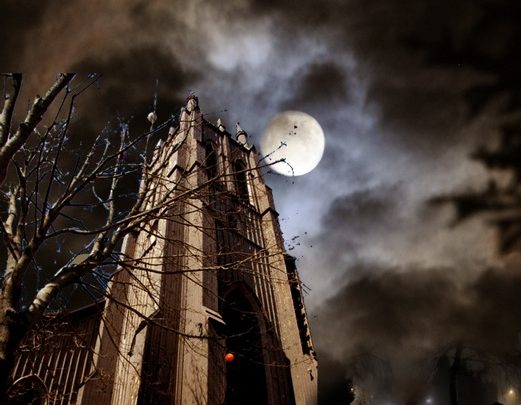
For years, churches were the centerpiece of many communities. You can still see some of these magnificent structures throughout the state of Maine. These buildings are beautiful places of worship, but you don’t have to be religious, or part of the congregation, to visit them. The Pine Tree State has many examples of unique architecture and fascinating historic churches throughout the state. You can find these magnificent structures from the big cities to small towns.
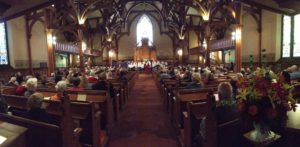
First Parish Church – Brunswick
Located in Brunswick, the First Parish Church was built in 1845. This church is an excellent example of Gothic Revival architecture with its vertical board-and-batten paneling. It is a single-story wood structure with lancet-arched openings and buttressed tower. At one time, there was a spire, but a storm damaged it in 1866. The congregation dates back to 1717, and the church has a continued affiliation with the United Church of Christ.
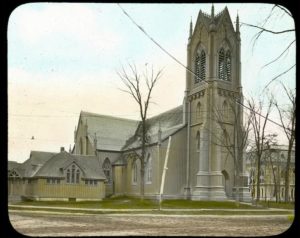
This building is actually the fourth church on the site. The site even has some ties to American literary history too. In 1851, Harriet Beecher Stowe claimed to have a vision as she sat in one of the pews. She saw a vision of an enslaved man wounded by a slave-owner. The incident would inspire her to write the book Uncle Tom’s Cabin.
In 1969, the National Register of Historic Places placed the First Parish Church on the registry. Despite that honor, the church would go into disrepair. Restoration work began in 2004, and it won the Maine Preservation Honor Award in 2006. Guests can visit the historic church, but keep in mind that it is still an active congregation. Everyone needs to be respectful while on the grounds.
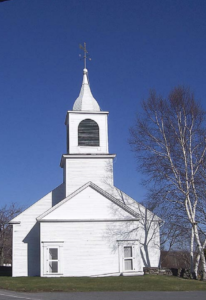
Spurwink Congregational Church – Cape Elizabeth
The Spurwink Congregational Church is the oldest public building in Cape Elizabeth. This church was built in 1802, but it saw a massive renovation in 1830. The architecture is a blend of early 19th century styles, including Gothic, Greek, and Federal architecture. From the outside, the building features a rectangular wood frame with clapboard siding and a gabled roof. The inside of the building has many of its original features, including a kerosene-powered chandelier and box pews. The Spurwink Congregation Church was the home to an active congregation until 1957. The town now owns it, and it continues to serve as a community space. The cemetery is one of the most interesting features of the church. In 1900, the congregation decided to stop any new burials due to the many undiscovered graves in the cemetery. The National Register of Historic Places listed the church on the registry in 1970. Today, the building is a meeting place for christenings, weddings, funerals, and other events. You can visit the structure throughout the year, but it does close on certain days.
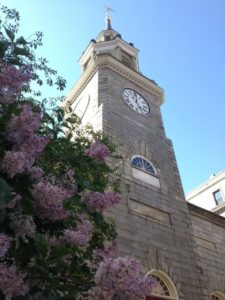
First Unitarian Church of Portland – Portland
This church is another building listed on the National Register of Historic Places, and the site is the oldest place of worship in the city. The first building was called “Old Jerusalem,” and it was the site of the Peace Treaty with the Norridgewock Indians in 1749. Maine’s State Constitution was also drafted here in 1819. The building even survived British attacks during the Revolutionary War. Its congregation has ties back to the founding of the city in the mid-17th century. The current building dates back to 1825. As you visit, you can still see the 1802 Simon Willard clock tower and internal gallery that were installed in the building. The steeple was completed in 1825, restored in 2012, and it is still in use today. Due to its granite structure, the church was one of the few structures to survive the Great Fire of Portland in 1886. All guests can enter the church and even stop in for Sunday services. While there, you can learn more about the church’s history and its close bond with the rest of the city.
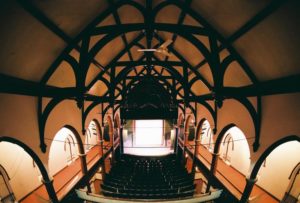
The Chocolate Church Arts Center – Bath
This art center originated as a 19th-century building known as the Central Church. It is one of the most well-preserved sites in the city of Bath. The Central Church was one of two Gothic Revival Churches dating back from the 1840s. In 1847, the church was commissioned as an expression of medieval English architecture. The main entrance is two and a half stories tall with a large gabled sanctuary. The structure features Gothic designs like pointed arch pinnacles and windows, buttressing, and carved bargeboards. There was once an active congregation at Central Church. However, in 1965, the Central Congregational Church merged with the local Winter Street Church. The church was sold and slated for demolition. The citizens of the community recognized the importance of the building, and they converted it into a cultural arts building. Today, the building is known as the Chocolate Church Arts Center. This non-profit center hosts many performances throughout the year. You can enjoy the gallery exhibitions, young children’s theater, lectures, live music, and workshops.
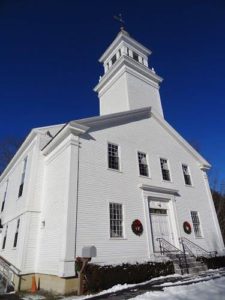
First Parish Congregational Church – Pownal
Since 1811, the First Parish Congregational Church has been standing in the Pownal area. A Revolutionary War veteran, Uriel Whitney, built the church. He moved to Pownal after the war and constructed a house in the town. During his time in the town, he even became a local teacher in Pownal. You can still see his home from the church’s property, and Whitney’s body is buried in the church’s cemetery. In addition to being a historic piece of Pownal history, this site is also home to a thriving congregation. The church has several welcoming programs throughout the year. If you attend one, you will get a look at the interior of this historic building in Pownal and make a few friends in the town.
Maine has many examples of charming churches throughout the state. You will not want to miss your opportunity to visit these locations and learn about the history of the Pine Tree State.


